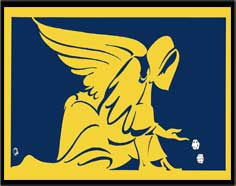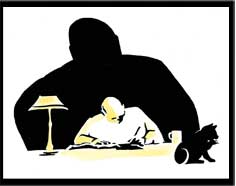As a favored haven, Australia has long been talked about as a ‘pot of gold’ or El Dorado for American mafia investment abroad. It is now literally true.
It was discovered in 1985 that, in Sydney and Melbourne, mafia front companies had actually been set up to deal specifically in gold, coins and precious gems. In each city, an outlet had been established in rented premises in inner suburbs close to the heart of the main business sections.
Authorities in Australia and the United States suspect the companies may also be fronts for international money laundering and cocaine trafficking.
Combined investigations in the United States by American agencies and the Australian Federal Police established that the Australian outlets had been set up at the behest of mafia bosses of New York.
An emissary, Louis Esposito, a well documented crime figure associated with mafia expansion in Florida and California, travelled to Australia to set up the companies. Esposito was in Australia while under investigation for a gangland murder in New York.
Esposito had previously supervised similar outlets in California. He and two of his agents appeared in Australia after a probe by US authorities forced the abandonment of their Californian operation.
Esposito and another fugitive, Peter LaGatta, also wanted for murder, were arrested in Florida in June 1985.
Both men, members of the New York-based Colombo mafia family, had disappeared from New York after indictment for a gangland-style slaying. They were indicted for the murder eight years ago of Louis Muscatello, who was found shot dead on 14 July 1976 in his Cadillac parked on a deserted road at Cold Spring Harbor in Suffolk County, New York. County police described the slaying as a professional hit job, and they charged that LaGatta shot Muscatello in the head while Esposito waited to drive him from the murder scene. Muscatello was said to have incurred the wrath of the mob for failure to repay loan sharks money he had borrowed.
Long before he came to Australia, Esposito had been targeted for wire tapping by authorities in New York.
In 1969, from telephone intercepts on a telephone used by Esposito in Babylon, New York, police were able to link Esposito and LaGatta with the hijacking of truck loads of television sets.
The official papers authorising the phone tap stated that Esposito used the phone to ‘further his illegal activities in grand larceny, criminal receiving, gambling, and homicide’.
When Esposito travelled to Australia to set up his companies, American authorities recorded that it was on ‘orders from the mafia’.
Esposito arrived in Australia on 12 January 1981, and visited Sydney and Melbourne before leaving on 2 February 1981.
Around that same time, Esposito was known to have been dealing in America with another New York mafia figure, Thomas ‘Tommy A’ Agro, reputed soldier in the Gambino mafia family of New York, then involved in mafia expansion moves in Florida.
Five months before Esposito’s arrest in 1985, Agro was extradited from Canada to Miami on racketeering charges stemming from the Florida operation. Agro and nine others, including a member of the Democratic Party’s National Committee, were indicted for associating to ‘organise, plan, finance, direct, manage, conduct and participate in an unlawful extortionate money lending and debt collection business, illegal gambling activity, and bribery of public officials . . .’.
All were indicted under special anti-racketeering laws enabling American courts to jail gangsters for a proven pattern of racketeering activity, rather than simply specific criminal acts. The same laws were recommended for Australia in the final report of the Costigan Royal Commission. No move has been made to implement them.
The difference between America and Australia has been pointed up by another operation in which the FBI used the same anti-racketeering laws in an attempt to smash a pornography racket turning over an estimated $US4 billion a year throughout America.
The FBI turned up links with Australia. Two of the top figures were able to travel to Australia and continue their operations with immunity. Not until 1985 did governments in Australia act to tighten laws against pornography.
In February 1980, a task force of 400 agents raided more than a dozen warehouses, seizing tonnes of pornographic material and making 54 arrests in Miami, Los Angeles and elsewhere.
It was hailed as the largest crackdown on pornographers in FBI history.
Within a month of the arrests, one of the ringleaders, Norman Arno, actually went back to court to have bail conditions relaxed so that he could travel to Australia. As queried by an FBI agent, ‘What could be so important, or so big in Australia to demand such urgent attention when a billion dollar business was on the line back in America?’
Arno flew into Australia on 21 March 1980 and, before leaving 15 days later, reportedly held meetings with Australian associates in Sydney, Melbourne and Perth.
Based in Los Angeles, Arno is a publicly listed organised crime figure. In a report of the Organised Crime Control Commission of California, he is stated to have been involved in many organised crime-connected pornography operations in southern California. The report describes him as business partner of New York mafia member Michael Zaffarano. Zaffarano died of a heart attack while being hunted by FBI agents.
Among others, Arno has dealt in Australia through a Melbourne identity, Alexander Gajic, nominated by the NSW Woodward Royal Commission as a ‘principal member, in Melbourne, of an interstate heroin distribution group’.
Better known since as a marketer of video porn, Gajic admitted to the Woodward commission that he had dealt in both marijuana and heroin.
Gajic has operated his video porn business from Bridge Road, Richmond, in Melbourne.
Estimated to turn over nearly $150 million a year, the pornographic film business in Australia has been described by Mr Douglas Meagher, QC, senior counsel for the Costigan commission, as a ‘big business with an enormous cash flow, untouched by law enforcement agencies in Australia’.
Arno was followed to Australia by Theodore Gaswirth, another organised crime figure listed by the Californian crime commission.
Gaswirth, too, was indicted with Arno in the 1980 crackdown by the FBI. In a subsequent operation, when the vice division of the Los Angeles Police Department sought to serve a warrant on him, Gaswirth was found to be in Australia.
Records show that Gaswirth first travelled to Australia at the end of January 1981, stayed just five days, and flew back to the United States. He returned for another five days in June 1981 and was back again for eight days in December 1981.
According to the Californian crime commission, ‘Gaswirth migrated to California from New York in 1970 and, under the auspices of organised crime figure Michael Zaffarano, a key link between California pornography and East Coast mafia groups, became one of the largest pornography operators in the Los Angeles area. One of Gaswirth’s partners in his various pornography businesses was Jacob Molinas, a Californian organised crime figure who was murdered gangland style in 1975’.
Mafia involvement in the pornography trade in Australia first came to police attention in 1974, when Federal police checked out a Californian film distributor who visited Australia three times that year arranging distribution of the film Deep Throat.
Although the distributor had no criminal history, he was registered with the FBI as an associate of Chicago mafia chieftan Tony Accardo, the legendary bodyguard of Al Capone.
A former boss of bosses of the New York mafia families, Carlo Gambino, once sought to invest in an Australian gambling venture — through, of all people, a one-time patron of Victorian football.
Jeffery Leo Patterson, boxer, footballer, adventurer, promoter and entertainment agent, came up with an idea for a world poker championship. He needed financial backing — and Gambino offered it.
Patterson had made a name for himself on the international scene as an agent in Europe for American entertainers, including Roy Orbison and Bill Halley. He had gone to Europe in the 1960s, leaving behind debts of $100,000. Returning in 1972, he paid up all his debts with cash in a blaze of publicity, and began driving an $83,000 Rolls Royce convertible.
At various times associated with South Melbourne and Richmond football clubs in the Victorian Football League, Patterson in 1976 made an ill-fated attempt to become president of Fitzroy club.
Patterson’s world came unstuck the following year when he was charged with conspiring to defraud the Mutual Permanent Building Society (now Statewide) of $58,000 to buy a flat for his girlfriend. Eventually pleading guilty, Patterson was fined $5000 in Melbourne’s County Court in July 1984.
During preliminary hearings, police disclosed Patterson’s dealings with Gambino. A police witness, Constable Peter Coleman, said Patterson was connected with the Melbourne underground and the Gambino family of the United States.
The court was told: ‘Patterson is involved in the financing of a world poker championship and has negotiated with Mr Gambino to hold it in all countries of the world, with the finals in Las Vegas.’ In fact, Patterson had received a telegram from Gambino advising: ‘Will finance your poker project fully to half million US dollars for fifty percent your share. Please phone my home New York number Monday . . . Kind regards Gambino.’
Gambino, now dead, was the mafia boss fictionalised by Mario Puzo’s book The Godfather.
Now in the poker machine business, as agent for American suppliers, Patterson has had the benefit of impressive credentials for his overseas dealings. In October 1978, he obtained a State Government credential issued by the then Liberal Premier of Victoria, Sir Rupert Hamer. Representations had been made on Patterson’s behalf by a Labor backbencher, Mr R. J. Eddy, MLC.
Of course, any government can find itself in an embarrassing position by giving a government imprimatur to individuals whose background may not be known.
During the 1970s, an American mafia identity, Daniel M. Stein, was able to come and go from Australia, despite reports from US intelligence sources that he was an associate of Meyer Lansky, a prominent leader of organised crime in America.
Stein operated in Australia on and off from March 1971, until April 1976.
A one-time part owner of Caesar’s Palace casino in Las Vegas, and hidden owner of an illegal betting operation closed down by the FBI, Stein linked up in Sydney with underworld leaders previously cultivated by Chicago mobster Joe Testa.
Police traced an ANZ bank account from which Stein had transferred two bank drafts for $47,000 and $9,000 to Chicago, and obtained a copy of a letter sent by Stein from Las Vegas to Sydney identity George Freeman complaining about a delay in monthly payments. ‘Seems the regular man is having an operation and the substitutes don’t know which end is up,’ the letter said. ‘You know I always drop you a note as soon as I receive the money and I haven’t gotten it for June yet.’
When in Australia, Stein flaunted his overseas connections by registering a racehorse with the AJC in Sydney and calling it ‘Lansky’.
During the Prime Ministership of Malcolm Fraser, when Stein’s background and connections became known, Stein was unable to get a visa for return visits to Australia. Nonetheless, he continued to maintain an interest in Australia, holding meetings with Freeman on neutral ground in Tahiti.
After Fraser lost power in 1983 and Bob Hawke took over as Prime Minister, political lobbyists known to the Prime Minister were contacted seeking support for an approach by Stein for re-entry into Australia.
His approach was rejected.
From Connections 2 by Bob Bottom





